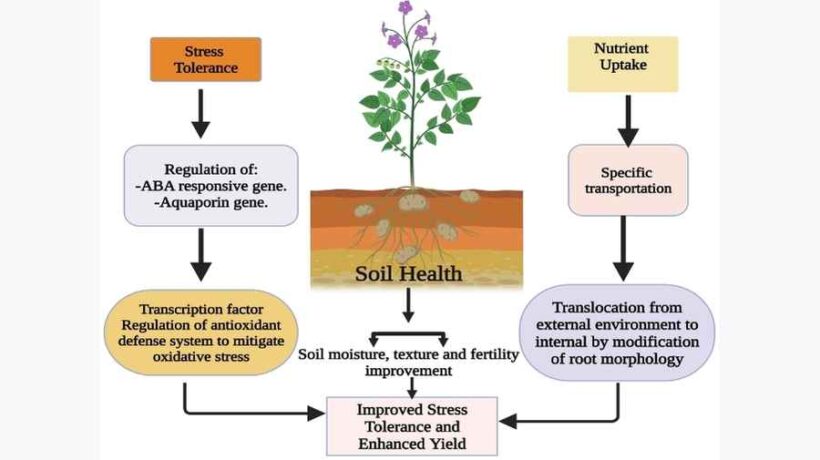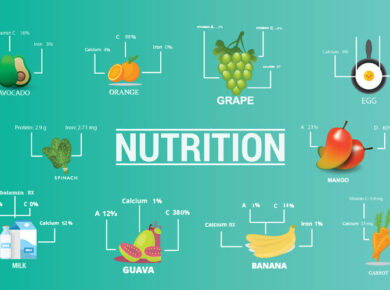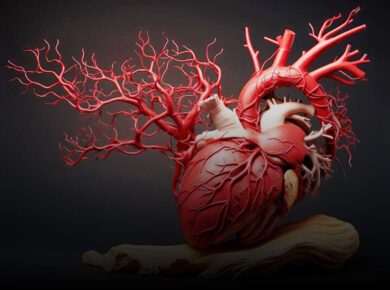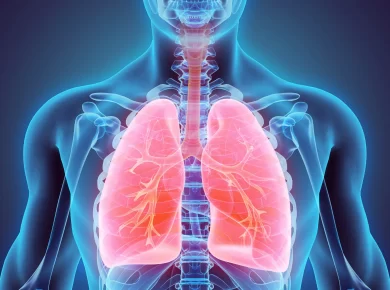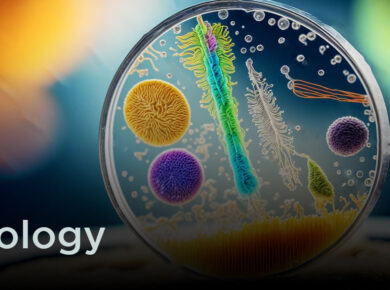Stages of Cellular Growth
The growth of an organism is always associated with growth of cells. This growth of cells occurs in three successive stages. They are
(i) Cell division : The number of cells increases due to mitosis.
(ii) Cell Enlargement : The size of individual cell increases after cell division due to increase in the volume of its protoplasm.
(iii) Cell differentiation : In this stage, structure of the cells changes to perform specific functions. and similar type of cells having same functions form a group, which is known as tissue.
In lower organisms such as bacteria and algae the entire body grows. But in higher organism like ferns, pine and flowering plants, growth is restricted to the cells present only in the growing regions, like shoot apex and root tip and close to the lateral sides of the stem and root. Growth at the tips leads to elongation of body parts and lateral (side ways) growth leads to increase in the thickness of stem and root.
Measurement of Growth
After knowing the different phases of growth let us know how to measure growth in plants. Growth in plants being a quantitative phenomenon can be measured in relation to time. It can be measured in terms of
- Increase in length or growth – in case of stem and root;
- Increase in area or volume – in case of leaves and fruits;
- increase in the number of cells – in algae, yeast and bacteria.
Auxanometer
For more accurate measurement of length, we can use the specially designed equipment called auxanometer. We can use it to measure the rate of growth of shoot length of plants. A thread is tied to the tip of stem of a potted plant and the thread is hung on the pulley of auxanometer.
The other end of the thread is ted to a weight. The pulley is fixed with a long needle, which slides over a graduated arc. As the stem grows in length the weight pulls the thread down. The movement of the needle is read on the scale of arc.
Factors Affecting Plant Growth
Generally plant growth is influenced by a number of factors both external and internal. External growth factors present in the environment that affect the growth of the plants directly or indirectly. These factors are
(i) Light (ii) Temperature (iii) Water (iv) Mineral Nutrients
(i) Light
Besides photosynthesis, light is also essential for seed germination, growth of seedling, differentiation of various tissues and organs and reproduction.
(ii) Temperature
Some plants grow in cold climate and some in hot climate. The optimum temperature required for growth of plants ranges between 28-30 C, but it may occur in the temperature range of 4-45 C. All metabolic activities of plants are directly affected be variation of temperature. A very low temperature causes injuries to the plant due to chilling and freezing, and very high temperature stops its growth.
(iii) Water
A plant absorbs water by its roots, use it is photosynthesis and other biochemical processes and some of it is lost through transpiration. For proper growth of plants a particular quantity of water is required. Both deficiency and excess of water retards the growth of plants.
(iv) Mineral Nutrients
All Metabolic processes require inorganic nutrients. Plant growth is adversely affected by the deficiency of nutrients.
Internal Growth Factors
In addition to the external factors as discussed above, there are some substances produced in the plant body itself, which affects the growth of the plant. These are called Plant Hormone or Phytohormones or Growth Hormones.
A phytohormone is an organic substance produced in a small quantity in one part of plant body and capable of moving to other parts to influence the growth of the part.
The growth of the plants can also be influenced by certain chemicals resembling plant hormones both in structure and functions. These are called growth regulators. They are not produced by plants naturally.
Growth regulators are chemical substances, other than naturally produced hormones, which promote, inhibit or modify growth and development in plants. The naturally produced growth hormones are broadly grouped under five major classes. They are
(i) Auxin (ii) Gibberellins (iii) Cytokinins (iv) Ethylene (v) Abscisic acid
Let us know details about these hormones.
(i) Auxin
Auxin is a growth promoter, generally produced by the growing apex of stem and root of the plants. It helps in the elongation of shoot and root tips behind apical meristem. The naturally produced auxin is indole -3-Acetic acid (IAA). They are also produced by chemical synthesis, which show same physiological responses like Auxin. Some of the synthetic auxin are Indole-3-butyric acid (IBA), 2,4-Dichiorophenoxy Acetic acid (2-4-D), Naphthalene acetic acid (NAA).
The Green word auxein means “to grow”. It was first isolated from human urine. An experiment was performed by Fritz Went on oat seedling to see the effect of auxins. When tip of oat coleoptile (early shoot) is removed, growth stops. Then the removed tip is placed on a block of agar (gelatinous material from sea weeds) for about an hour.
This agar block is then placed on the cut end of the seedling. It was observed that the growth of the seedling started again. It shows that there is something that has passed from the cut tip into the agar block, which helps to restart the growth. This was named Auxin, a plant hormone.
Function of Auxin
- It Promotes cess elongation;
- It suppresses the growth of lateral bud. If the tip of a plant is removed, the lateral branches begin to grow; In most of the plants apical bud suppresses the development of lateral buds. This is called apical dominance.
- It delays fall of leaves. (leaf abscission)
- NAA (Naphthalene acetic acid) is used for preventing fruit drop in apples before they are ripe.
- 2, 4-D (2, 4-dichlorophenoxy acetic acid) acts as a weedicide.
(ii) Gibberellin
Gibberellin or Gibberellic Acid (GA) was initially isolated from a fungus Gibberella fujikuroi. In plants, it is produced in embryos, roots and young leaves and it enhances growth.
Function of Gibberellins:
(a) It helps in elongation of stems in some specific plants. By using gibberellin the height of the dwarf plants can be increased.
(b) It breaks dormancy of seeds and buds.
(c) It induces parthenocarpy (Formation of seedless fruits without fertilization) or stimulus received by pollination.
(iii) Cytokinins
They were extracted from coconut milk. Cytokinins are synthesized in root apex, endosperm of seeds, young fruits etc. where cell division takes place continuously.
Functions of Cytokinins:
- They stimulate cell division, cell enlargement and differentiation.
- They prevent aging of plant parts.
- They inhibit apical dominance and help in growth of lateral buds.
(iv) Ethylene
Ethylene is a gaseous hormone. It is found in ripening fruits, flowers and leaves.
Function of Ethylene:
- It induces ripening of fruits.
- It promotes senescence and abscission of leaf, flowers etc.
- In cells it only increases the width not the length.
(v) Abscisic Acid
Abscisic Acid also known as dormancy is a naturally occurring growth inhibitor found in wide variety of plant. It is synthesised in leaves.
Function of Abscisic Acid:
- It induces dormancy of buds and seeds as opposed to Gibberellin, which breaks dormancy.
- It promotes the senescence of leaf, i.e., fall of leaves happen due to abscisic acid.
- It inhibits seed germination and development.
- Opening and closing of Stomata.
